Reviews
House
Nobukhi Obayashi
Japan, 1977
Credits
Review by Evan Kindley
Posted on 30 October 2009
Source Janus Films DVD Projection
Related articles
Screening Log
Hausu
Categories 31 Days of Horror VI
Search for information on Nobuhiko Obayashi’s Hausu on the internet and you’ll find a few comparisons to midnight movie staples like Eraserhead, The Shining and Yellow Submarine. But it says even more about the film that most of the descriptions take a hypothetical form, such as “what if Walt Disney decided to make a horror film based on Pee Wee’s Playhouse”; “imagine Gone with the Wind as a ’70s-era music video invaded by traditional Japanese ghosts”; “Beetlejuice as directed by Dario Argento”; or “if Michel Gondry directed his own version of a J-horror remake.”1 Lucky for us, we don’t need to imagine any of those disquieting what-if scenarios, because Hausu most assuredly exists, the only example in a genre of one. A stateside rarity for years, not often seen in theaters and available only in an unsubtitled version on German DVD, Hausu has lately been acquired by Janus Films and a new translated print has been popping up at repertory houses and film festivals across the country in recent months.
So what’s so special about Hausu? A viewing of literally any scene, and almost any frame, of the movie will answer this question in short order. Obayashi’s debut feature incorporates a kitchen sink’s worth of visual and optical effects - matte paintings, chroma key, hand-drawn animation, puppetry, collage, stop-motion, slow-motion, dissolves, irising, and quite a few techniques I’m not sure they have a name for yet - in the service of one of the most bizarre and unpredictable horror movies of all time.
In a movie like this (not that there are any other movies like this), the plot is emphatically not the point, but I’ll do my best. The film’s frenzied, bubbly (literally: the damn things are everywhere) opening scenes have the feel of a 1970s sitcom like Love American Style, rife with over-the-top mugging and gratuitous wipes, and accompanied, as is much of the rest of the film, by virtually wall-to-wall pop music. We are introduced to our teenage heroine, Gorgeous (Oshare in Japanese), and her six school friends Fantasy, Sweet, Prof, Melody, Kung Fu, and Mac. Life seems fairly idyllic for these girls until they’re hit with a double whammy of bad news. First, the summer camp they’d planned on attending, run by their dreamy teacher Mr. Togo, is canceled without warning. Second, Gorgeous learns that her single father (a film composer for Sergio Leone) has just proposed marriage to a younger woman: the beautiful and mysterious Ryoko Ema, who always seems to have a wind machine stationed somewhere in front of her and a long scarf white billowing out behind). Upset by the prospect of a new stepmother and in need of guidance, Gorgeous decides to take a cartoon train along with her friends and her cat Snowflake to visit her aunt in the countryside. On the way, she recounts the story of the death of her aunt’s fiancé in the Second World War, a tale we see reenacted in classically restrained, Ozu-esque fashion, overlaid with giggling commentary supplied by the girls (“How romantic!” “Men were so masculine in former times”).
This little expository anecdote provides all the explanation that will be forthcoming about the sinister happenings that make up the rest of Hausu. Gorgeous’ aunt never married after her fiancé’s death, and now lives atop a creepy mountain with her cat Blanche, supporting herself by giving piano lessons. But while Auntie initially seems so nice and welcoming, she is apparently a ghost, or a witch, or else her cat is: in any case, supernatural chaos ensues. The girls are picked off one by one in cruelly ironic ways by Auntie and the other mischievous spirits who inhabit the house with her: the perpetually hungry Mac (short for “stomach”) falls into a well looking for sweet potatoes and gets decapitated and eaten; Sweet is drowned in an ocean of soft pillows; a grand piano chews Melody’s fingers off, then consumes the rest of her while pounding out the movie’s theme music… you get the idea. It’s here that Obayashi really starts to break loose, creating a series of crazily imaginative set pieces that could just as easily be avant-garde short films as scenes from a horror movie. Gorgeous, meanwhile, is taken over by the spirit of her dead grandmother, adopting traditional Japanese dress and losing her sense of self in the process—one of the few cogent pieces of symbolism in an otherwise arbitrary onslaught of imagery. Anticipating a similar trick in Kubrick’s The Shining, which it precedes by a good three years, Obayashi creates some suspense by cutting back and forth between the girls’ plight and an intrepid rescue mission by Mr. Togo, who somehow ends up transmogrified into a pile of bananas. In Hausu’s absolutely bonkers climactic fight sequence, Fantasy, Prof and Kung Fu face off against Auntie, the possessed Gorgeous, an animated hanging lamp, and Blanche the cat, who can now fly and spit blood. By this point, no narrative resolution would really satisfy, and Obayashi appropriately ends his film ambiguously, dispatching Ryoko to the house to try and reconcile with Gorgeous, who may or may not still be possessed.
Whatever else it is, Hausu is certainly not the most frightening film ever made. The film is usually billed as a “horror-comedy,” and it reportedly incorporates allusions to other Japanese horror films of the era, making it, I suppose, the Scary Movie of its time. Furthermore, Obayashi’s liberal use of effects is too ostentatious to allow for even a second of the suspension of disbelief that’s so crucial to scary movies; even in the most gruesome or nightmarish passages, there is usually some goofy sleight-of-hand undercutting the horror. He also has a penchant for the corniest, most childish of horror conventions: dancing skeletons play a major role, for instance. Indeed, Hausu is an oddly childlike film, and it’s not surprising to learn that the scenario was conceived by Obayashi’s seven-year-old daughter. The heroines, though nubile and often underdressed, have a basic innocence that the film refuses to take away, even as it happily dismembers them. For the most part, the ghosts are as playful as the girls themselves, and while there’s a fair amount of blood and guts, there are also numerous moments that reassure us that it’s all “just a movie,” albeit in the strangest possible ways, like when Melody’s severed head floats above the piano masticating the rest of her body and comments, “Naughty!” At other times, though, the cuteness and silliness combine to produce a decidedly creepy effect, giving us a blend of juvenile and adult sensibilities reminiscent of the work of outsider artist Henry Darger. (One eerily beautiful montage inserted into the aforementioned fight sequence, in which Kung Fu’s head and detached limbs float through a pastel parasol landscape straight out of a children’s book, is especially Dargeresque.) We may not be in typical slasher territory here, but it feels as though Obayashi has tapped into something equally disturbing in its way.
It’s impossible to overstate how unusual Hausu is, but also easy to condescend to it as a product of Japan’s famously outré postwar consumer culture (“those crazy Japanese!”). So let it be stated clearly that Obayashi definitely knew what he was doing. Loopy as it is, the film does deal with some serious themes, the historical memory of the war being the most prominent, though no doubt it could also be saying something about the sexualization of schoolchildren in Japanese society. And many of the more mind-bending effects he employs are directly traceable to his previous work in the cinematic avant-garde.2 Few fine artists have sold out so extravagantly and entertainingly, and if Hausu doesn’t quite deliver the familiar thrills of the horror genre, it’s far too schlocky and crowd-pleasing to rate as an art film, even by postmodernist standards. Obayashi doesn’t so much subvert or deconstruct horror tropes as cycle through them at such high speed that some of the elements break off the chassis and burst into flame. The movie feels a little too fast and too dense for human viewing, like a state-of-the-art product that hasn’t undergone enough safety testing yet. But that doesn’t keep it from being a dangerous amount of fun, best experienced with a crowd of unsuspecting but open-minded cinéastes. Get ready to be bewildered.
- I’m also partial to this description by a user by the name of SANNAFABICH: “if you ever downloaded ALL of the internet and compress[ed] it into a single rar file, this is what you’d get.” ↩
- Several of Obayashi’s early experimental films can be found online, as can his frankly astounding series of television commercials for Mandom-brand cosmetics, starring Charles Bronson http://www.youtube.com/watch?v=l8bqVL0VXrE. ↩
More 31 Days of Horror VI
-
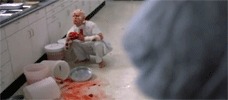
From Beyond
1986 -
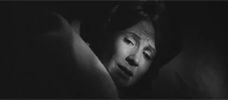
The Haunting
1963 -
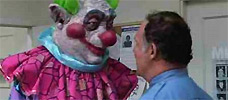
Killer Klowns from Outer Space
1988 -
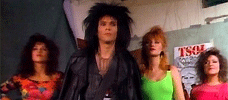
Shock ‘Em Dead
1991 -
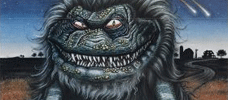
Critters
1986 -
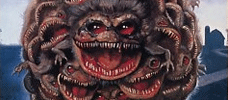
Critters 2
1988 -

The Fall of the House of Usher
1928 -
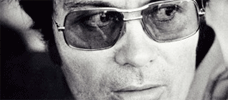
Jonestown: The Life and Death of Peoples Temple
2006 -
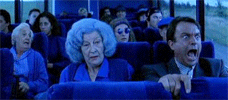
In the Mouth of Madness
1994 -

Winterbeast
1991 -
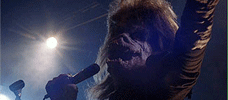
Black Roses
1988 -
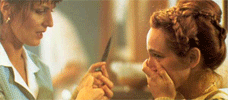
Needful Things
1993 -
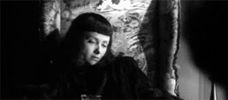
The Seventh Victim
1943 -
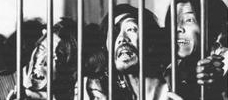
A Page of Madness
1926 -
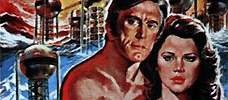
Holocaust 2000
1977 -
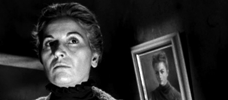
The Man and the Monster
1958 -
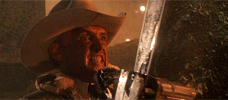
The Texas Chainsaw Massacre 2
1986 -
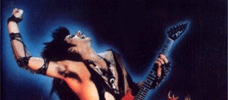
Trick or Treat
1986 -
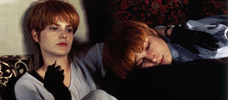
Single White Female
1992 -
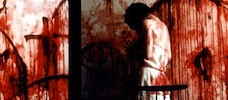
Trouble Every Day
2001 -
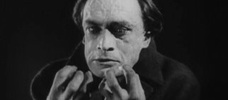
The Hands of Orlac
1924 -
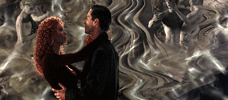
The Devil’s Advocate
1997 -
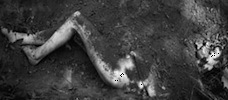
Nocturne
1998 -

Hardware
1990 -
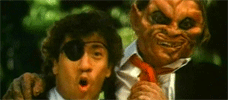
Hard Rock Zombies
1985 -
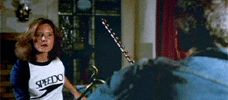
The Slumber Party Massacre
1982 -
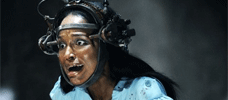
Saw VI
2009 -
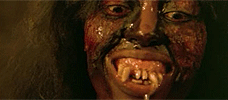
Zombi 4: After Death
1988 -
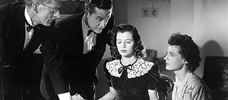
The Uninvited
1944 -
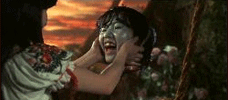
Hausu
1977
We don’t do comments anymore, but you may contact us here or find us on Twitter or Facebook.



